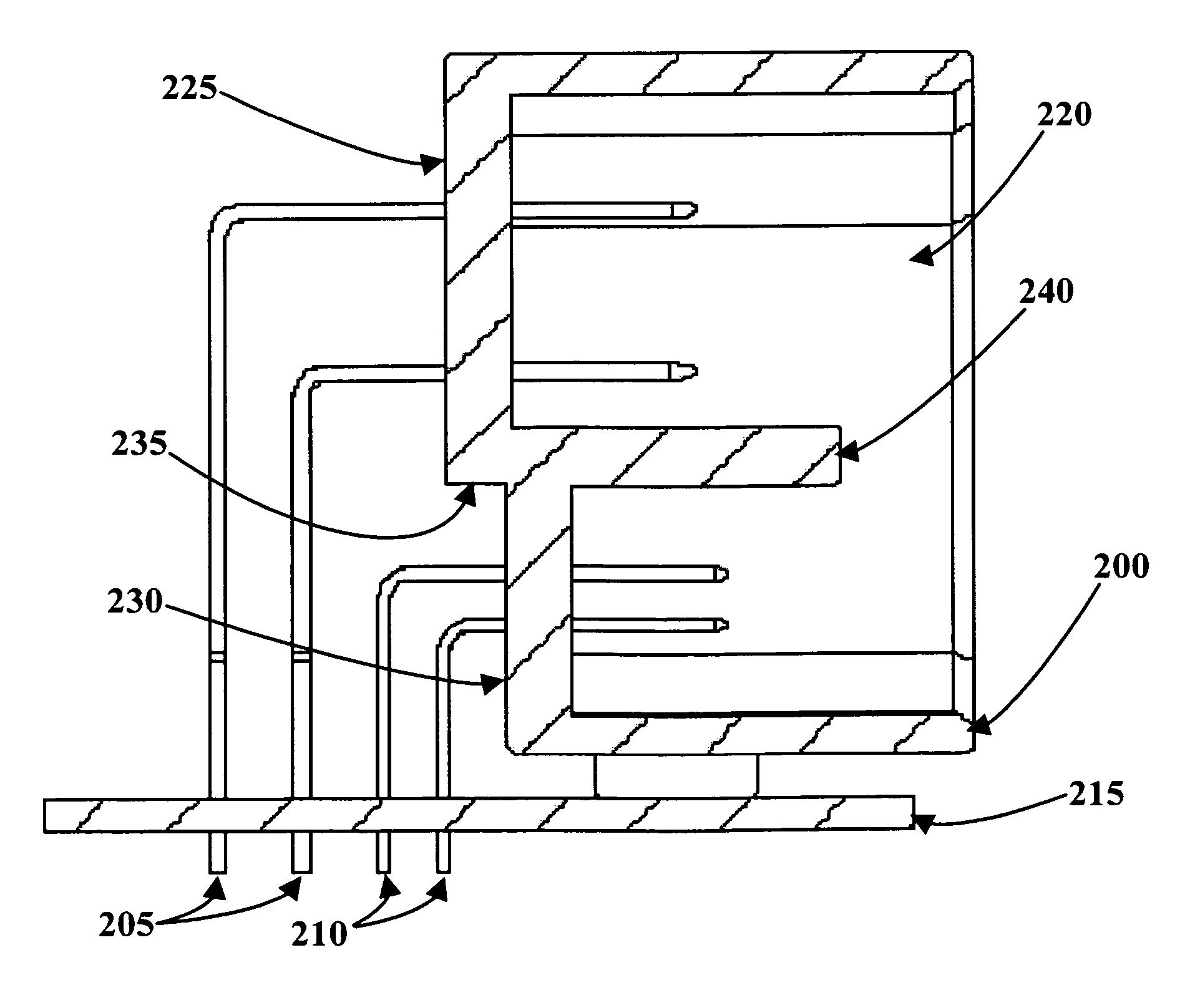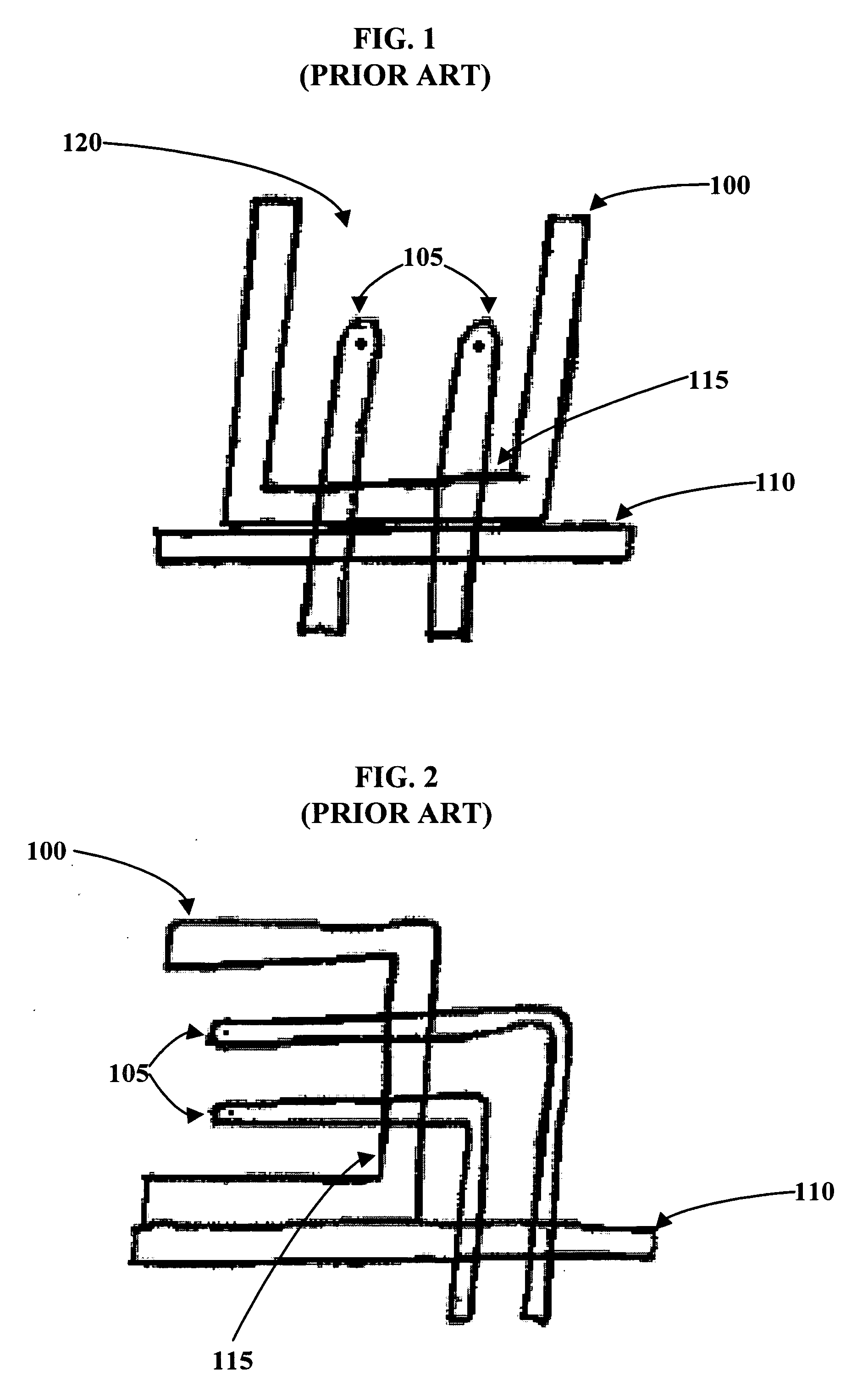Male header connector device
- Summary
- Abstract
- Description
- Claims
- Application Information
AI Technical Summary
Benefits of technology
Problems solved by technology
Method used
Image
Examples
Embodiment Construction
[0034] As is shown in FIG. 6, an embodiment of the invention relates to a male header connector device in which a plurality of rows of terminals 205 and 210 of varying heights extend upwards from a surface of a circuit board 215 and into a connector housing 200. Connector housing 200 defines a receptacle portion 220, and includes an asymmetrical surface comprising, for example, retention surfaces 225 and 230. Terminals 205 and 210 extend through the asymmetrical surface via retention surfaces 205 and 210, respectively, and extend into receptacle portion 220. The asymmetrical surface comprises a plurality of substantially parallel vertical sections (i.e. retention surfaces 225 and 230) separated by at least one substantially horizontal section 235. In this embodiment, horizontal section 235 extends into receptacle portion 220 as a divider 240, which separates the terminal rows 205 from terminal rows 210 inside receptacle portion 220. The horizontal and vertical sections of the asymme...
PUM
 Login to View More
Login to View More Abstract
Description
Claims
Application Information
 Login to View More
Login to View More - R&D
- Intellectual Property
- Life Sciences
- Materials
- Tech Scout
- Unparalleled Data Quality
- Higher Quality Content
- 60% Fewer Hallucinations
Browse by: Latest US Patents, China's latest patents, Technical Efficacy Thesaurus, Application Domain, Technology Topic, Popular Technical Reports.
© 2025 PatSnap. All rights reserved.Legal|Privacy policy|Modern Slavery Act Transparency Statement|Sitemap|About US| Contact US: help@patsnap.com



